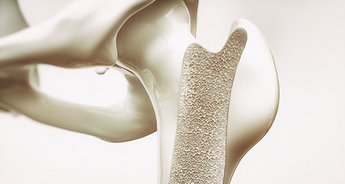Infant Nutrition
Here you can find a collection of current recommendations concerning infant nutrition as well as studies examining the characteristics of nutrition during baby’s first year of life. The key themes are the introduction and feeding of solids.
Normal bowel movements in infants and young children
What constitutes a normal defecation pattern in infants and young children? The authors of this study have collected available data on stool frequency and consistency in healthy children up to the age of 4 to establish reference values. …
Excessive food intake in childhood & inflammatory changes
Existing data indicates that overweight and obesity in childhood and adolescence tend to persist into adulthood, impacting susceptibility to chronic and/or lifestyle diseases. …
Is there an increased fracture risk in vegetarians and vegans?
The authors have conducted a review of current findings on the topic, whether a purely plant-based diet leads to poorer bone health…
The iodine status of infants
Adequate iodine supply in infancy is a prerequisite for normal thyroid function and brain development. As there is little data on the iodine status of infants during their first year of life…
Plant-based non-dairy drinks: nutritional content and health profile
Children are increasingly given plant-based alternatives to cow’s milk. Why is this problematic and what health consequences are to be expected?
Successful hyposensitisation of young children with peanut allergy
Peanut allergy is the most common IgE-mediated food allergy in children. The success of hyposensitisation treatment in older children is questionable. Until now, the only option for young children has been…
Inadequate iron supply in fully breastfed infants aged 6 to 12 months
Since the prenatally acquired iron stores are gradually depleted during the first six months of life, iron supply is a big issue for the particularly critical developmental phase between 6 to 12 months of age. US scientists have calculated...
Dietary reduction of Saturated Fatty Acids from early childhood reduces Atherosclerosis in Adolescence
Atherosclerosis, the intravascular accretion of cholesterol, fatty acids and calcium phosphate, begins in early life. To learn if this can be prevented by dietary measures, 1,062 infants were randomised into 2 groups at the age of 7 months...

Revised EFSA opinion: Appropriate age range for the introduction of complementary foods
Does the timing of the introduction of foods other than breast milk or infant formula within the first six months of life make a difference to a child’s health? An Age recommendation for the introduction of complementary Foods.
Overweight and obese children suffer more frequently from functional gastrointestinal disorders
A prospective study examined the prevalence of functional gastrointestinal disorders in 103 overweight and obese children in comparison to…
Vitamin D levels: Vitamin D intake from diet is only marginal
A recent study from Japan suggests that, due to the generally higher intake of fish (oily fish) in Japan, a better supply of liposoluble vitamin D could be observed. The study documented both the diet and time spent outside of 600 Japanese children.
Soft Drinks and Acne Vulgaris
The pubertal rise in androgen levels triggers sebum production and in its consequence a spectrum of skin changes called acne vulgaris. Dietary factors have been implicated in this pathogenesis.
Nutrition in the first 1,000 days: ten ways to lower the risk of obesity
The prevalence of overweight and obesity in childhood has increased in recent decades in most countries. Put simply, obesity can be seen as a result of the imbalance between energy intake and energy expenditure. Can correct nutrition in early childhood lower the later risk of obesity?
„Baby-led Weaning“
Most infants are introduced to solid foods in the form of purées or, less frequently, finger food after the age of 6 months, as a supplement to breast milk or formula milk. What effect does a baby-led approach to the introduction of solids have on infant growth and becoming overweight?

Why infants shouldn’t be fed honey
Parents might feel that they are doing their children some good by feeding them honey every now and again. There is a risk, although rare, that if honey contains Clostridium botulinum…














